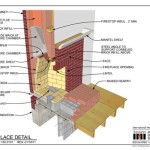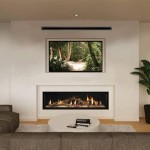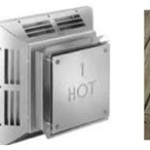How To Build Floating Shelves Next to a Fireplace
Floating shelves offer a contemporary and aesthetically pleasing storage solution, particularly when integrated into the architectural design surrounding a fireplace. Building floating shelves next to a fireplace can enhance the visual appeal of the hearth area while providing functional space for displaying decorative items, books, or other belongings. This project requires careful planning, precise measurements, and a thorough understanding of structural integrity to ensure the shelves are both visually appealing and capable of supporting the intended weight.
The proximity of the fireplace introduces unique considerations. Elevated temperatures and potential smoke exposure necessitate the selection of appropriate materials and construction techniques. This article provides a comprehensive guide to building durable and attractive floating shelves adjacent to a fireplace, covering material selection, structural design, installation procedures, and safety considerations.
Key Considerations Before Starting
Prior to commencing the construction of floating shelves near a fireplace, a number of factors must be carefully assessed. These considerations will significantly impact the longevity, safety, and overall aesthetic of the final installation.
First, the material selection process is paramount. Solid wood, particularly hardwoods like oak, maple, or walnut, is frequently chosen for its durability and aesthetic appeal. However, these materials are susceptible to warping or cracking under fluctuating temperatures. Engineered wood products, such as plywood or MDF (Medium-Density Fiberboard), offer greater dimensional stability, meaning they are less prone to warping in the presence of heat. If using engineered wood, ensure it is formaldehyde-free, or has ultra-low formaldehyde emissions, especially when placed near a heat source. Furthermore, the finish applied to the wood must also be heat-resistant. Spar varnish, polyurethane, or specialized heat-resistant paints are suitable options.
Second, the proximity to the fireplace will influence shelf depth and spacing. Excessive shelf depth can obstruct airflow, potentially affecting the fireplace's efficiency. It is crucial to maintain adequate clearance between the shelves and the fireplace opening to prevent overheating. A minimum clearance of 12 inches is commonly recommended, but this distance may vary depending on the fireplace's heat output and the manufacturer's specifications. The vertical spacing between shelves should also be considered, ensuring sufficient room for displaying items and facilitating easy access.
Third, assess the structural integrity of the wall where the shelves will be mounted. Fireplaces are typically surrounded by masonry or framed walls. Masonry walls, such as brick or concrete, require specialized anchors designed for these materials. Framed walls, constructed with wood studs, offer easier anchoring options, but it is imperative to locate the studs to ensure secure attachment. Using a stud finder is essential for pinpointing the precise location of the studs. Avoid relying solely on drywall anchors, especially for heavier items, as they provide limited support.
Designing the Shelf Structure
The structural design of floating shelves is critical to their stability and weight-bearing capacity. The most common design involves a hidden support system that is securely anchored to the wall and encased within the shelf.
One popular method utilizes steel rods or pipes embedded into the wall studs. These rods extend outward, providing a strong foundation for the shelf to rest upon. The diameter and length of the rods will depend on the shelf's dimensions and the anticipated load. Typically, rods with a diameter of 1/2 inch or 3/4 inch are sufficient for most applications. The rods should be spaced evenly along the length of the shelf to distribute the weight evenly.
Alternatively, a box-style support system can be constructed using plywood or MDF. This system consists of a hollow box frame that is attached to the wall studs. The shelf then slides over the box frame, concealing the support structure. The box frame should be constructed with strong joints, such as screws and wood glue, to ensure rigidity. The thickness of the plywood or MDF will depend on the shelf's dimensions and the expected load. A minimum thickness of 3/4 inch is generally recommended.
Regardless of the chosen support system, it is essential to accurately measure and mark the stud locations on the wall. Use a level to ensure that the support system is perfectly horizontal. Precise measurements are crucial for aligning the shelves and preventing them from sagging or tilting.
For masonry walls, consider using heavy-duty concrete anchors designed for shear load. These anchors are typically installed by drilling pilot holes into the masonry and then inserting the anchor. Ensure that the anchor is securely embedded in the masonry to provide adequate support. Consult with a hardware specialist to select the appropriate anchors for your specific wall type and load requirements.
Installation Procedures and Safety Precautions
The installation process requires meticulous attention to detail and adherence to safety protocols. Prior to commencing any work, gather all necessary tools and materials. These include a stud finder, level, drill, screwdriver, measuring tape, pencil, safety glasses, and dust mask. Disconnect the power to any electrical outlets in the vicinity of the work area to prevent electrical shock.
Begin by locating and marking the stud locations on the wall. Use a stud finder to accurately identify the studs. Confirm the stud locations by driving a small nail into the wall. If the nail hits solid wood, you have located a stud. Mark the stud locations with a pencil.
Next, install the support system. For rod supports, drill holes into the studs at the marked locations. The holes should be slightly smaller than the diameter of the rods to ensure a tight fit. Insert the rods into the holes and secure them with construction adhesive. Ensure that the rods are perfectly horizontal using a level.
For box-style supports, attach the box frame to the studs using screws. Pre-drill pilot holes to prevent the wood from splitting. Use shims to level the box frame if necessary. Ensure that the box frame is securely attached to the wall.
Once the support system is installed, slide the shelves over the supports. For rod supports, the shelves should have pre-drilled holes that align with the rods. For box-style supports, the shelves should slide snugly over the box frame. If necessary, use construction adhesive to secure the shelves to the supports.
Take extra precautions when working near a fireplace. Wear appropriate safety gear, including safety glasses and a dust mask. Use a drop cloth to protect the floor from dust and debris. Work in a well-ventilated area to minimize exposure to fumes from adhesives or finishes.
After the shelves are installed, inspect them carefully to ensure that they are level and securely attached to the wall. Test the weight-bearing capacity of the shelves by placing progressively heavier items on them. If the shelves show any signs of sagging or instability, reinforce the support system as needed. It is safer to over-engineer than under-engineer, especially when dealing with potential heat exposure.
Finishing the shelves involves sanding, priming, and painting or staining the wood to match the surrounding décor. Choose heat-resistant finishes designed for use near heat sources. Apply the finish according to the manufacturer's instructions. Allow the finish to dry completely before placing items on the shelves.
Finally, consider adding design features to enhance the aesthetic appeal of the shelves. This might include decorative brackets, lighting, or trim. Ensure that any added design elements are compatible with the heat and smoke from the fireplace.

Pin On Home Decor

Built Ins Next To Fireplace Design Ideas

Floating Shelves On Both Sides Of The Fireplace Give A Sense Balance And Harmony Living Room Bedroom Decorating
:max_bytes(150000):strip_icc()/311232807_2323060507842894_3898490003930808988_n-c88a352b9f8e4c449d2e3bf9e1063cef.jpg?strip=all)
30 Clever Ideas For Floating Shelves In Any Room

Awesome Diy Modern Farmhouse Floating Shelves 804 Sycamore

36 Stunning Fireplace Decor Ideas That Ll Make Your Home Chic And Cozy

50 Amazing Living Room Designs With Floating Shelves Home To Z Remodel Fireplace

Diy Wall To Floating Shelves Domestically Blissful

White Built In Bookshelves Around The Fireplace Green With Decor

Floating Shelves Either Side Of Fireplace Bookcases And Storage Feature Wall Living Room Decor Built In
Related Posts








